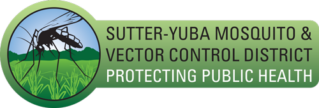Predatory Animals
Bats
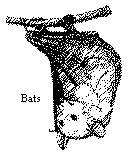
There is much to be said about bats, but here the discussion will be mostly limited to their part in reducing numbers of mosquitoes. Bats belong to the order Chiroptera, a Greek word meaning “hand wing”. They are mammals, meaning they feed their young with milk produced in mammary glands. All bats are warm-blooded, have fur and give birth to live young. No other mammal has the ability to fly. Since there are approximately 925 living species of bats in the world, one can imagine that they eat a variety of foods. Worldwide, about 70% of bats eat flying insects. Fruit makes up the diet of many of the remaining bats, and a few species are carnivorous, consuming frogs, lizards, other bats, mice and fish. The infamous vampire bat does indeed get its nourishment from the blood it takes from other animals. In the United States almost all of the 42 bat species (23 in California) feed after dark or at dusk on available flying insects. Because of the effort required for flight, bats must consume large quantities of food. Some experts have estimated that a single bat can consume between 600 and 1,000 insects in one hour. Bats either catch insects in their mouth or scoop them into their tail or wing membranes. They reach down and take the insect into their mouth. Bats drink by skimming close to a body of water, gulping a mouthful. As cold winters set in and insects become less abundant, bats either migrate to warmer areas or go into hibernation. In contrast to the beneficial behaviors of bats, they do present some public health issues. You can read about them on our Bats and public health page.
Birds
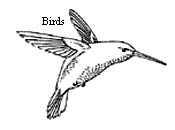
Many bird species prey on flying insects, but no omnivorous bird eats only mosquitoes. Birds are generally opportunistic feeders and consume whatever foods are available, although some birds may have favorite foods. Scientific studies that examine the stomach contents of smaller, omnivorous birds show that mosquitoes represent only a small portion of the total content. In areas where unusually high numbers of mosquitoes proliferate, birds that have been collected from these areas reveal a greater percentage of mosquitoes in their total stomach contents, up to 70% and higher. It is also important to note that water fowl consume mosquito larvae in their normal diets. Mosquito larvae and other aquatic invertebrates make up a good portion of omnivorous birds’ diets. The relatively small numbers of mosquitoes eaten by birds does not create a significant impact in reducing mosquito numbers, but every little bit helps!
Predatory Insects
Dragonflies
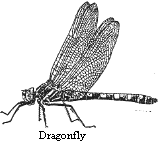
Adult dragonflies are a familiar sight during warm summer months. Common names include darners and mosquito-hawks. They belong to the insect order Odonata, suborder Anisoptera. Sixty-three species have been identified in California. Dragonflies have 3 distinct life stages: egg, naiad and adult. The life span of an adult dragonfly is relatively short, lasting 6 to 8 weeks during the summer months. Adults appear to be constantly hunting. Prey is scooped out of the air and consumed in flight. During their life time, dragonflies can consume large numbers of mosquitoes.
Damselflies
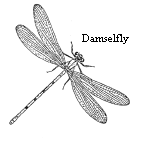
Damselflies belong to the order Odonata, suborder Zygoptera. Thirty-eight species of damselflies have been identified in California. Damselflies have 3 distinct life stages: egg, naiad and adult. Sometimes mistaken for their close relative the dragonfly, damselflies are not as active or graceful in flight. They are feeble flyers compared to the powerful flight of dragonflies. Instead of actively hunting flying insects, damselflies position themselves on a branch or other suitable perch, darting out to catch prey as it passes by. Adults emerging in the spring or summer die during the ensuing winter months.
